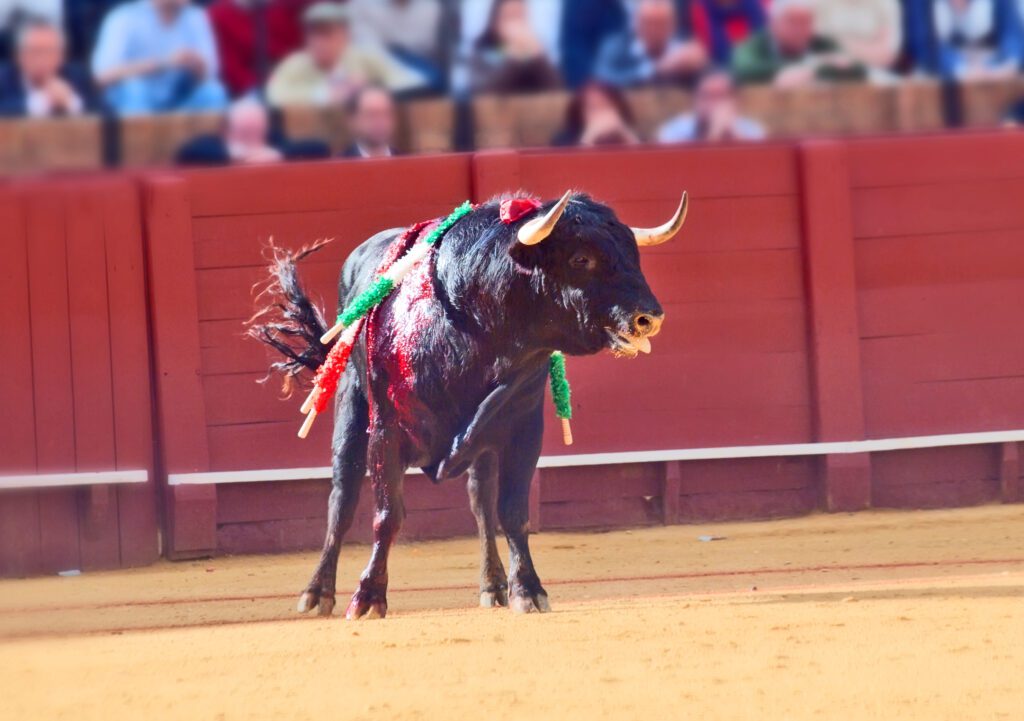
It’s Official! Mexico City Has Banned Bullfighting, Ending A 500-Year-Old Tradition
For the first time in over five centuries, bullfighting in Mexico City is facing a radical transformation. In a landmark decision, lawmakers have voted to ban violent bullfights involving the torture or killing of bulls, marking a significant cultural shift in one of the world’s most prominent bullfighting capitals. Yet, the city isn’t abandoning the tradition entirely. It’s attempting to reimagine it. The goal is to preserve the artistry, ceremony, and spectacle of the practice while stripping away the bloodshed that has long drawn criticism from animal rights groups and progressive voices.
This new direction opens up a complex debate between cultural heritage and ethical evolution. Here’s how Mexico City plans to walk the line between preserving a tradition and protecting animals.
The Ban: What Exactly Is Changing?
The new legislation passed by Mexico City’s Congress prohibits public events where bulls are injured or killed. This effectively halts traditional bullfighting as most people know it, where matadors confront bulls in an arena and kill them in front of a live audience. Violators will face fines and potentially even criminal charges under animal cruelty laws.
However, the ban doesn’t outlaw bullfighting entirely. Instead, it allows for a non-violent version, sometimes referred to as corridas incruentas, or “bloodless bullfights.” These events retain the pageantry and choreography but avoid harming the bull. In these versions, matadors may perform with bulls using capes and passes, but without swords or spears. The emphasis shifts from domination to dance-like display.

Why Now? Public Opinion and Political Pressure
Support for the ban has been growing for years. Animal rights activists in Mexico have long denounced the cruelty of bullfighting, calling it outdated and inhumane. Public opinion has shifted dramatically, especially among younger generations. A 2022 survey by Parametría found that over 70 percent of Mexicans oppose bullfighting, even though it was once widely embraced across the country.
Political winds have also changed. Mexico City’s legislators cited animal welfare as a primary reason for passing the bill. Legislator Jorge Gaviño, one of the bill’s co-authors, said during the vote, “This is not a decision against tradition, but a step toward becoming a more ethical society.”
Other regions in Mexico have already banned bullfighting entirely, including Sinaloa, Guerrero, and Quintana Roo. Mexico City’s move could signal a nationwide trend.
The Cultural Weight of Bullfighting in Mexico
Bullfighting was introduced to Mexico by Spanish colonizers in the 16th century. Over time, it evolved into a uniquely Mexican art form, blending colonial rituals with local flair. Plaza México in Mexico City is the largest bullfighting arena in the world, and events there have drawn tens of thousands of spectators.
Supporters argue that bullfighting is not just a sport but a cultural expression, one tied to national identity and historical pride. Matadors are often regarded as folk heroes. The costumes, music, and choreography are deeply symbolic, with performances structured around values like bravery, grace, and honor.
But while some see bullfighting as sacred, others see it as a relic of cruelty. This clash of views has placed Mexico at a cultural crossroads.
Bloodless Bullfighting: What Will It Look Like?
Bloodless bullfights are not new. They have been performed in parts of the United States, Portugal, and even in some areas of Spain. In these events, bulls are not killed and are often trained or conditioned to participate in a way that minimizes stress or danger.
In Mexico City, future events may resemble these models. Bulls might still charge at capes and participate in traditional movements, but they will not be stabbed with banderillas or swords. Matadors may even use Velcro-tipped spears that attach harmlessly to a padded target on the bull, purely for show.
Organizers are exploring ways to preserve the tension and spectacle without the violence. One proposed version includes choreographed duels between human performers and mechanical bulls, or symbolic ritual reenactments that highlight the matador’s skill without requiring an actual animal.
News in the same category


Disconnect WiFi at Night Sleep With the Phone on Airplane Mode in Another Room

The Hidden Dangers of Cooking with Aluminum Foil: Health Implications and Safer Alternatives

Japan Has Created a New Plastic That Dissolves in the Sea Within Hours and Enhances Soil Health

Scientists Reveal Simple Blood Test Can Detect Cancer Years Before Symptoms Appear

Bill Gates Says Only 3 Jobs Are Safe From AI — Are You In One Of Them?

People Unvaccinated Against COVID Are 48 Percent More Likely To Get Into Traffic Accidents

A ‘Zombie’ NASA Satellite Woke Up After 60 Years—And It Sent Out A Powerful Radio Pulse

Scientists Claim That If Humans Go Extinct, Octopuses Have The Best Chance Of Building The Next Civilization

23-Year-Old Ukranian Discovers Way To Make Paper From Fallen Leaves Without Cutting Down Trees

Rare ‘Doomsday’ Oarfish Washes Ashore In Tasmania, Igniting Superstitions Of Impending Disaster

No one knows why 13 trucks are blocking the highway, when the truth is revealed, tears flow

Controversial Inventor’s Mysterious Death Sparks Debate Over Alternative Energy Suppression

Only two places are safe in a nuclear war, expert says

Woman Claims to Be Part of the 0.00001% Who Remembers Every Moment of Her Life—Including Before Birth

5 Countries Tighten Immigration Rules, Making It Tougher For Americans To Move Abroad

Gulf Stream On The Brink Of Collapse — Scientists Warn Of Global Catastrophe

French Farmer Discovers $4 Billion Gold Deposit, But Legal Hurdles Prevent Him From Profiting

Inside The Global Seed Vault: Earth’s ‘Safest Place’ Only Opens Six Times A Year
News Post

Surprising Triggers: What May Be Causing Your Hives (Urticaria)

The Truth Behind ‘Durex’: What Its Name Actually Stands For Has Stunned Many

Your Eyes: Windows to Your Health – Uncovering Diabetes and Cancer Through Vision

Psychology: People Who Talk To Their Pets Like They Are Humans Display Certain Emotional Traits

Disconnect WiFi at Night Sleep With the Phone on Airplane Mode in Another Room

The Hidden Dangers of Cooking with Aluminum Foil: Health Implications and Safer Alternatives

Japan Has Created a New Plastic That Dissolves in the Sea Within Hours and Enhances Soil Health

Scientists Reveal Simple Blood Test Can Detect Cancer Years Before Symptoms Appear

Bill Gates Says Only 3 Jobs Are Safe From AI — Are You In One Of Them?

5 Early Warning Signs of Cancer in Children: Parents Must Know to Save Their Child

People Unvaccinated Against COVID Are 48 Percent More Likely To Get Into Traffic Accidents

If Your Body Has a Bad Odor in These 3 Areas, It Could Mean Poor Liver Detox and Declining Function – Get Checked Before It’s Too Late!

Warning: If You Notice This Symptom in Your Body, Go to the Hospital Immediately – It Could Be Late-Stage Nasopharyngeal Cancer

A ‘Zombie’ NASA Satellite Woke Up After 60 Years—And It Sent Out A Powerful Radio Pulse

Scientists Claim That If Humans Go Extinct, Octopuses Have The Best Chance Of Building The Next Civilization

23-Year-Old Ukranian Discovers Way To Make Paper From Fallen Leaves Without Cutting Down Trees

Rare ‘Doomsday’ Oarfish Washes Ashore In Tasmania, Igniting Superstitions Of Impending Disaster

Sore Throat Relief: How Ginger Can Soothe Your Throat Naturally
